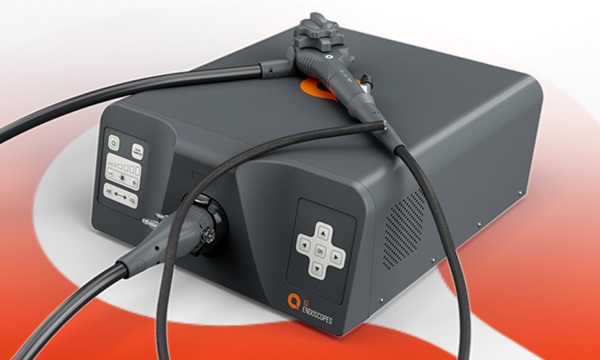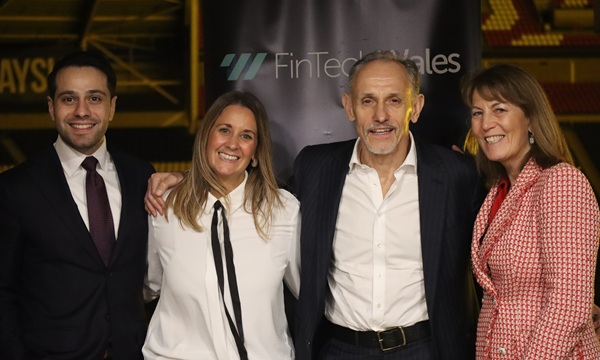
Cardiff’s 50-year-old Panasonic manufacturing plant has been fitted with a renewable energy demonstration facility in a move hailed as ‘laying the foundation for a decarbonised future’.
Panasonic Manufacturing UK (PMUK) has official opened Europe’s first Panasonic HX demonstration facility to be powered by renewable sources at the factory.
It has been fitted with a combination of hydrogen fuel cells powered by green hydrogen, solar PV and battery storage, all steered by Panasonic’s proprietary Energy Management System (EMS).
Panasonic said one of the aims of the project was to contribute to the development of the UK’s hydrogen-related industry.
The Panasonic HX installation will power the plant’s microwave oven assembly using renewable energy. Panasonic is investing approximately 130 million Euros – around £108 million – to develop the core Panasonic HX technology in Japan and launch this pilot in Cardiff, plus another location in Europe in 2025.
The long-term goal is to demonstrate that 100% of the electricity consumed for the microwave oven production in Cardiff can be powered entirely by renewable sources.
Robert Blowers, Managing Director, Panasonic Manufacturing UK, said the investment in the Cardiff plant, which employs 326 permanent staff, had been welcomed by the workforce.
“When we announced this to the workforce a few months back there was a seismic response,” he said. “Given these are tough economic times, to have such an investment from Panasonic Corporation into the local community was very well received. There are a lot of employees who are extremely focused on sustainability and to see this come to Cardiff is a great feeling.”
The move was also benefiting the local economy, he said, adding that local suppliers had been used for the development.
The availability of green hydrogen in South Wales had also been a key factor in deciding to site the demonstration facility at Panasonic’s Cardiff plant, said Mr Blowers.
Masahiro Shinada, President & CEO, Panasonic Corporation, said:
“This facility will use green hydrogen produced in the UK. We believe that this is the place where we can take a big step towards the future by combining British and Japanese Technology. It is our sincere hope that this facility can be used as a showcase to foster diverse partnerships, accelerate innovation through the combination of technologies, and contribute to the development of the UK’s hydrogen-related industry.
“Now, with the launch of Panasonic HX here at PMUK, we look forward to the next chapter. In ten years, or even 20 years, I hope this facility will be seen as a birthplace of innovation – where we helped build a hydrogen society and laid the foundation for a decarbonised future.”
Mr Blowers added:
“The Proof of Concept at our Cardiff factory will show that innovative energy solutions can be implemented into existing older factories and buildings. Our manufacturing plant here in Cardiff turns 50 years old this year and has shipped over 90 million finished goods since 1974.
“Now, it is Europe’s first Panasonic HX demonstration site, with the potential to be an inspirational ‘beacon project’ for sustainable manufacturing. And it proves that it is possible to retrofit older industrial buildings with leading-edge renewable energy technologies.”
First Minister Eluned Morgan said:
“Panasonic has played an important role in our economy for 50 years. At a time when our traditional industries started to decline, Panasonic invested in Wales, bringing new products and ways of working that other industries have learnt from, and it has continued to invest and develop the latest technology here. It has built strong links with the local community and provides high quality, skilled jobs in manufacturing and technology.
“Creating green jobs that tackle the climate crisis is a top priority for me. Panasonic’s decision to build Europe’s first HX demonstration facility, powered entirely by renewable sources, aligns with our vision for Wales as a globally-responsible nation, dedicated to safeguarding the future for generations to come.”
Panasonic said it was unique in its efforts to generate electricity for its factories with 100% renewable energy by using green hydrogen combined with solar energy to generate electricity in-house and control the coordination of three energy sources, including the batteries which store the PV energy when the factory isn’t in operation, such as on weekends.
The firm is working towards reducing CO2 emissions from its own operations to virtually Net Zero by 2030 – contributing to a total of 110 million tonnes of own emission impact through reduction and avoidance of CO2 emissions.
The HX solution at the Cardiff factory is expected to deliver wide-ranging operational and sustainability benefits. By being able to produce its energy onsite, the factory will benefit from more reliable electricity provision. Panasonic said this decentralised approach to energy demand management increases the company’s energy resilience in a volatile market. By integrating an energy management system and storage batteries, the factory will be able to scale its energy needs when ramping up productions, for example.
The heat generated by the Panasonic hydrogen fuel cells as a by-product of the electricity production will be used to heat spaces and hot water. By replacing the facility’s gas boiler with this renewable energy source – a combination of a heat exchanger and Panasonic’s heat pump technology – fossil fuels will cease to be used.
The 21 5KW fuel cells have 95% energy efficiency when converting green hydrogen into electricity and heat energy. At the same time, the factory has been able to introduce a number of electricity saving measures such as motion detected lighting, push taps, small cisterns etc.
The Cardiff site is now set to begin commissioning renewable energy and will be fully operational via its EMS in March 2025.
By demonstrating the HX solution at its factory in Wales, Panasonic aims to develop a technology set-up which is optimised towards local conditions, including temperature, days of sunshine and overall climate.
Panasonic’s EMS will leverage external local weather forecast data, including changes in weather conditions and demand fluctuations, to maintain a consistent balance between electricity supply and demand, and gather data to minimise losses in the generation, storage and transmission of renewable energy and ensure a stable supply of energy.
Panasonic plans to share its learnings and transferable best practice from its experiences at Cardiff with its customers and other local businesses, as well as inviting university students and school pupils to the factory.















